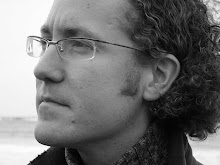A colleague of mine, Dorota Ostrowska from Birkbeck has written an article on the potential for interdisciplinary film research. As a case study Dorota has used my PhD thesis. Her summary of my research and its implications for broader film studies is very insightful and complimentary. I especially enjoyed her discussion of the implications of my cognitive theory of continuity editing on the classical socio-political interpretation of the 'Hollywood Style' of film editing:
(pg. 108) "Smith’s research offers us a new insight into the view of continuity
editing as a basis of bourgeois and capitalist ideology. His findings show a
psychological basis for continuity editing, revealing its reliance on some
powerful cognitive mechanisms. Such an understanding of continuity
editing does not make the ideological tenets of the cinema that it underpins
right. Instead, it presents us with a different paradigm (scientific and empirical)
to explain why, even today, and in spite of vehement criticism, continuity
editing is still a predominant mode in audiovisual production across
the world. The reasons for the lasting success of this type of editing may be
as much cognitive and perceptive as they are ideological. Furthermore,
Smith’s conclusions change the status of certain editing practices, such as
continuity editing, from a series of arbitrary choices imposed on audiences
by editors working under pressure from money-hungry studios, into
choices based on the cognitive expectations of these audiences. Smith’s
research gives us better understanding why continuity editing has been so
pervasive and the cognitive basis of its ‘naturalness’ to spectators."
This is indeed the implications of my theory and empirical evidence. Although, as a cognitive scientist I would never have stated these implications so boldly as Dorota :) I do not dismiss the political, ideological, or practical forces influencing the path of film form evolution. The intention of my research is to add an extra influence to the evolution, namely cognitive compatibility. I will leave it up to film theorists such as Dorota to decide what this means for classic film theory.
I do not agree with all of Dorota's interpretations of my research but I think the article is very thought provoking and it is nice to see my research influencing others.
Film as a source of visual knowledge in informatics, architecture and music
Ostrowska, D. (2009), Studies in European Cinema, Vol. 5 (2), pgs. 105-116.
This article is a series of questions and reflections, which grow out of my recent
research projects which centred on the issue of interdisciplinarity in relation to
film studies and cinema. Through my work at the Cinema Interdisciplinary
Network (CINET), which we have been running at the University of Edinburgh
since 2005, I have come across a number of academics and researchers who work
with cinema or use moving images in their research but who are not film studies
scholars and are not working in the areas more traditionally associated with film,
such as literature or cultural studies. Could the CINET members’ engagement with
cinema yield some new insights about the object of their study for film scholars?
What does it mean that cinema is becoming a repository of visual knowledge?
How is this knowledge to be treated and organised? What does it mean that film is
becoming not only an aesthetic object but also a tool to conduct intellectual analysis?
What are the difficulties and pitfalls of such research projects? In order to
address these questions, I will discuss two projects presented in the context of
CINET – ‘An Attentional Theory of Continuity Editing’ which is Tim Smith’s doctoral
project completed in the department of Informatics (Computer Science) and
‘Inflecting Space: Correlating the attributes of voice with the character of urban
spaces’, which is a collaboration between architecture and music.




No comments:
Post a Comment